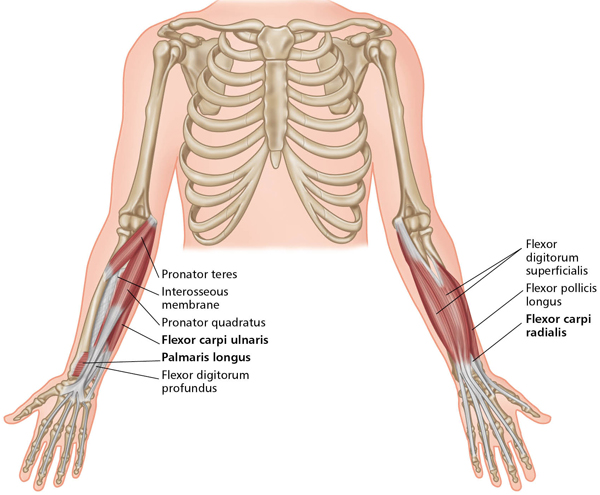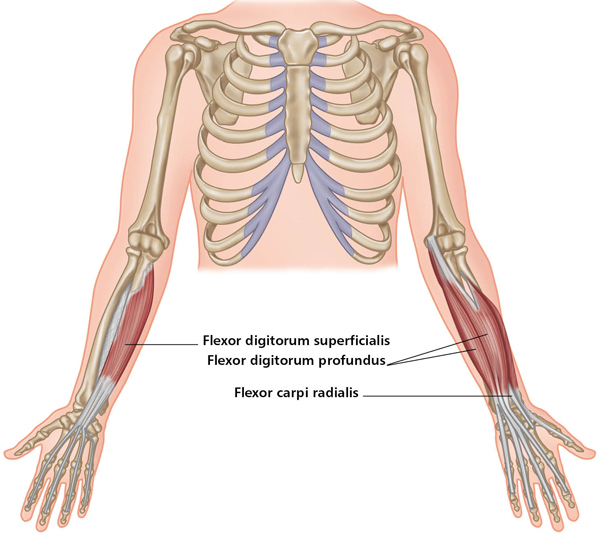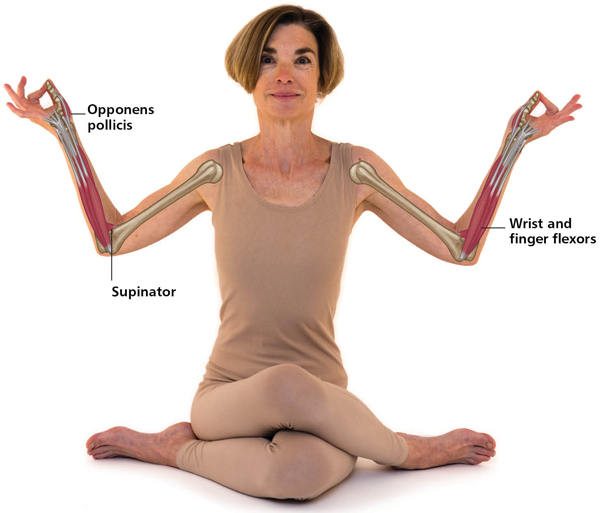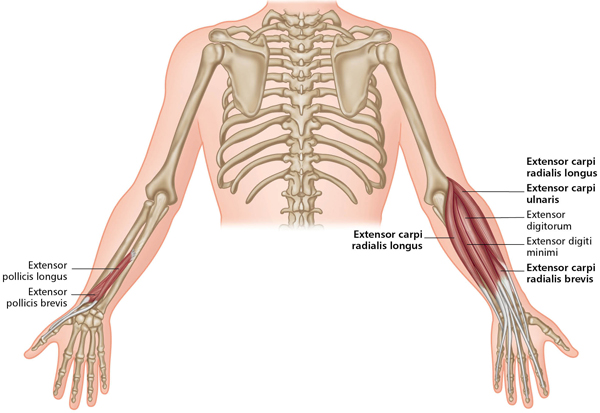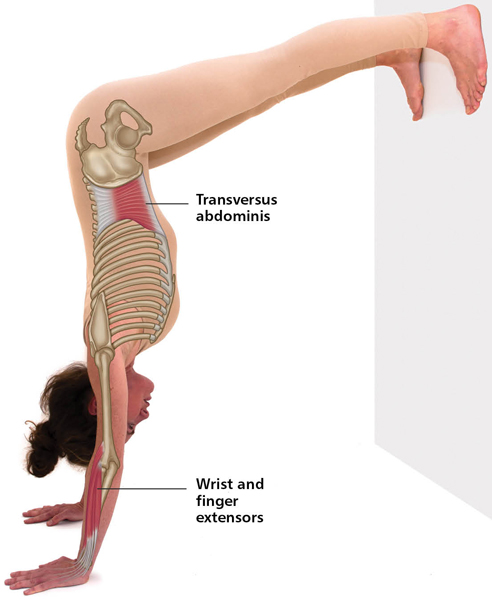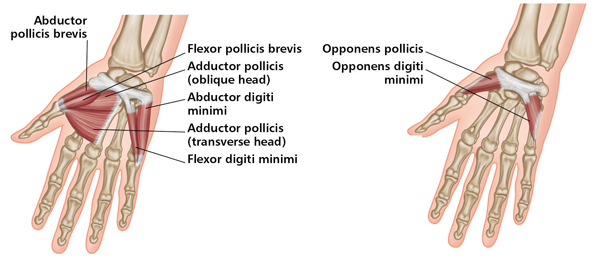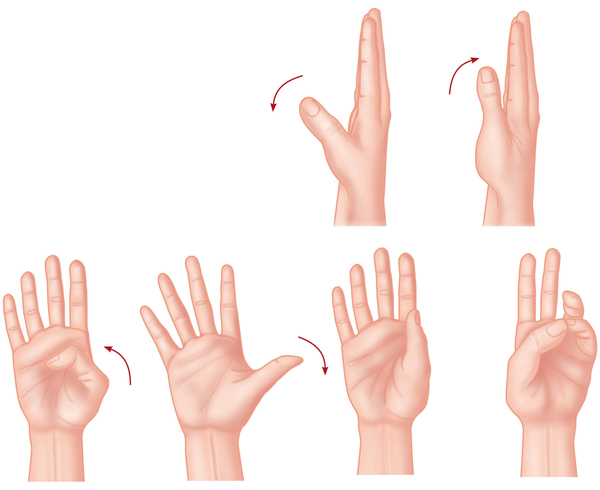7
Muscles of the Forearm and Hand
The wrist and hand together comprise 27 bones, numerous ligaments, and many muscles and tendons. These components shape the forearm and are fundamental in developing the fine motor capabilities of the fingers. Remembering that the definition of a joint is the articulation between two bones, imagine how many joints are located in this area. The main joints associated with yoga will be discussed in this chapter.
Radioulnar Joint
Structure
The radioulnar joint is where the radius and ulna bones articulate with one another, both at the proximal end (near the elbow) and at the distal end (near the wrist). This is the rotary joint of the forearm, active in asanas such as Down Dog. Often confused with the elbow joint, the radioulnar joint is a separate joint, classified as a “pivot joint.” It is uniaxial, working in the horizontal/transverse plane only.
Actions
Pronation and supination happen here. Supination is best described at this joint as the palm facing forward (anatomical position), also called “palm up.” The radius externally rotates to a parallel position with the ulna. In pronation, the palm of the hand faces backward, or “palm down.” The radius rotates internally so that it lies diagonally across the ulna.
Strengthening and stretching the muscles of this joint area is not as vital as making sure that the actions of pronation and supination are performed equally. For example, in Virabhadrasana II, the forearm position is pronation; adding the action of supination will allow the shoulder blades to settle and help access the entire shoulder area in a subtle yet positive way. The arms can then return to pronation as the practitioner experiences the difference.
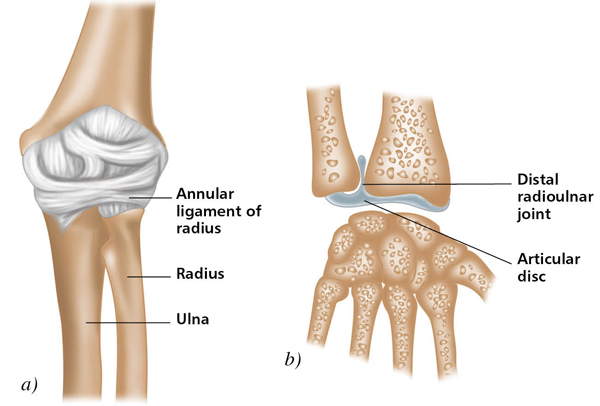
The radioulnar joint; a) proximal end, b) distal end.

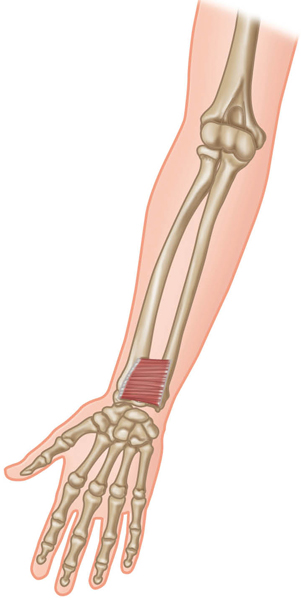
Matsyasana (Fish Pose) Level I


Full Garudasana (Eagle Pose) Level II

Wrist Joint and Hand
Structure
An important joint in yoga postures supported by the hands, the wrist is termed the “radial carpal joint.” This is where the radius and ulna join the carpals, specifically the proximal row, comprising the scaphoid, lunate, triquetrum, and pisiform bones.
The distal row of the carpals, comprising the trapezium, trapezoid, capitate, and hamate, meets the five metacarpals, which articulate with the distal phalanges. Each finger has three phalanges, whereas the thumb has only two. This completes the full hand.
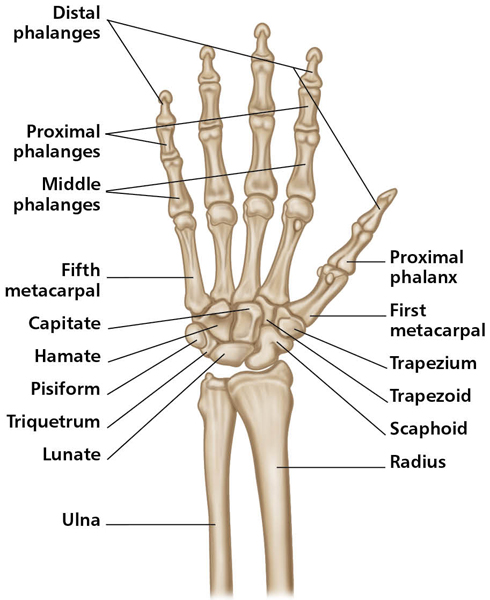
Actions
The wrist is a condyloid joint; therefore, it can do flexion, extension, abduction, and adduction. The combination of these four actions is called “circumduction.” When the hand is used as support in yoga postures, the wrist is usually in a hyperextended position. This is a nice counterpoint to a more normal state of the wrist, which is flexion.
The carpometacarpal and metacarpophalangeal joints are also condyloid joints. The interphalangeal joints are hinge joints, where flexion and extension of the fingers occurs.
The thumb is considered a saddle joint. Besides flexion, extension, abduction, and adduction, the action of “opposition” takes place, allowing the thumb to touch each finger separately. Without this action people would not have evolved to this technological age. The specialization of the human hand has enabled us to build fires, make tools, and shape the world. The action of opposition sets humans apart from other primates.
